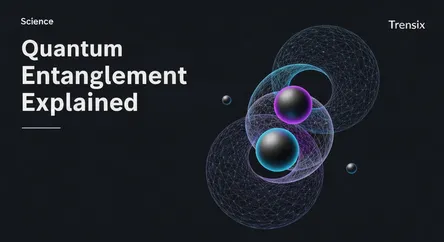Science
Quantum Entanglement Explained

Discover quantum entanglement, the bizarre link between particles that Einstein called "spooky action," and its role in future technology.
What is it?
Quantum entanglement is a phenomenon where two or more particles become linked, sharing a unified state regardless of the distance separating them. This means their fates are intertwined; if you measure a property of one particle, like its spin, you instantly know the state of its entangled partner, even if it's light-years away. This connection, which Albert Einstein famously called "spooky action at a distance," is a core principle of quantum mechanics. The particles behave as a single system, losing their individual quantum states once linked.
Why is it trending?
Entanglement is no longer just a theoretical curiosity. It is the foundational resource for a new wave of technologies. The 2022 Nobel Prize in Physics was awarded to pioneers in this field, highlighting its importance and bringing it into the spotlight. Researchers and tech giants are heavily investing in harnessing entanglement for quantum computing, which promises to solve problems impossible for classical computers. Furthermore, its role in creating ultra-secure communication and highly sensitive sensors makes it one of the hottest topics in science and technology today.
How does it affect people?
The applications of quantum entanglement are set to revolutionize our world. In the near future, it will lead to unhackable communication networks through Quantum Key Distribution (QKD), safeguarding everything from financial transactions to government secrets. It is essential for building quantum computers that could accelerate drug discovery, materials science, and complex financial modeling. This technology also promises to enhance medical imaging, enable more precise GPS navigation, and improve scientific instruments, leading to breakthroughs across numerous fields that will impact daily life.